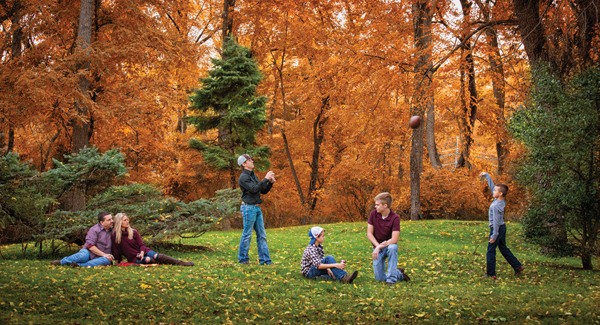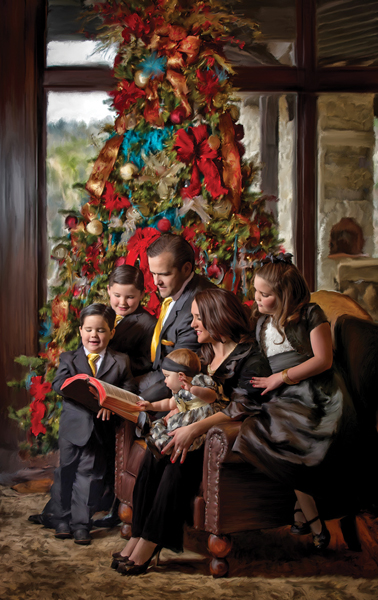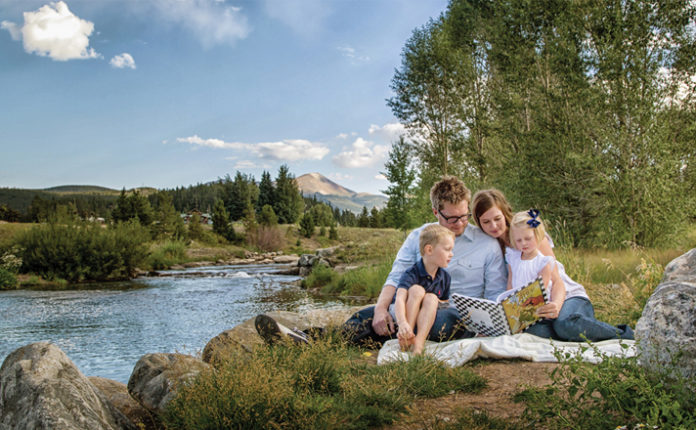At the various seminars I have given, I am often asked, “How do you create those interactive portraits? …How are you getting them to purchase interactive portraiture instead of the traditional, smiling (and looking at the camera) pose? What do you say to the clients to get them to do this so naturally?” Although not every session is exactly alike, there are some basic techniques I’ve learned over the years that work well for me.
My introduction to interactive portraiture began several years ago when I took a Texas School class taught by Canadian Don MacGregor. It was a “life changing” experience. I had been in the photography business for about four years and was still searching for my own “style.”
While studying under Don, I soon realized how valuable family portraits were to my clients, especially when they capture the family in a truly natural way. I immediately went back to my studio and started adding some interactive portraits to each session. At first, I didn’t have a lot of samples on my walls to display this interactive style, so clients didn’t purchase them. But as soon as I got an image that I thought was a great example, I printed it in 30×40 and displayed it where it could be seen as soon as you walked through the door. As soon as I did that, I started selling them. It was like magic!
Today, I am known for my interactive style and I spend about 40% of each session creating these types of portraits. I have many clients who still want the traditional style, but my clients come to me because they see a difference in my work, even if they don’t know what it is they are actually liking about it. I love creating these images and I love seeing them grace the walls of my clients’ homes. In about 90% of the family portraits displayed in my studio, the subjects are not looking at the camera. Along with the studio displays, I also display interactive images in my marketing pieces and create some of these images for every client.

So, how do I get clients to interact… naturally? It depends on the age of the children. Children under the age of 10 or so are easier to work with. You just have to do something like… picking a leaf off a tree and looking at it, or picking a flower and counting the petals (or picking off the petals). You can read a book, build a sandcastle, feed the birds or ducks. Those things are pretty easy and universal to do in many situations. Most people still need to be told what to do and are looking for guidance from me. Therefore, I still pose the clients in a way that looks great and flatters the subject. Once that is accomplished, I tell them what they are going to be doing while in that pose.
A good “pre-portrait” consultation is the key to making it all work. During that consultation, I introduce this style to the clients. We talk about things that might have special meaning to that particular family such as reading a favorite book, playing an instrument, playing catch or other kinds of sports, fishing, having a tea party or picnic. Each family is different and that is what makes these types of portraits so interesting to me. I would much rather create a story-telling portrait than, as Don MacGregor says, a “roadmap of the face.”
Creating interactive portraits of families with older or adult children can be more challenging. For example, a family with older teenage children or grown children are not usually going to all read a book together or smell a flower together. This is where a family activity will really come in handy… perhaps a photograph of them on their ski boat or posed around their swimming pool. Having a family engaged in an activity that they all enjoy will make their expressions more realistic and they will enjoy the session more.
 One image I often create is that of the family walking together and holding hands. They feel really silly doing it, but they all start really laughing and the expressions are usually priceless. I also create many images in a session where the subjects are looking at something that is off in the distance. These types of images also sell well because the client can still get a good view of their faces, but they are not staring back at themselves on the wall. This is a good step for the “traditional” client that you are trying to break away from the norm and move into something a little different.
One image I often create is that of the family walking together and holding hands. They feel really silly doing it, but they all start really laughing and the expressions are usually priceless. I also create many images in a session where the subjects are looking at something that is off in the distance. These types of images also sell well because the client can still get a good view of their faces, but they are not staring back at themselves on the wall. This is a good step for the “traditional” client that you are trying to break away from the norm and move into something a little different.
Our studio has now taken interactive portraiture another step and have added them to our “Collector’s Series” portraits. From Easter and Santa portraits to other specials such as Fall Fairies, I now create storytelling images of each session. Not only are clients purchasing wall portraits of these images, they are also purchasing albums that capture all of the images from the session. These sessions are 20-30 minutes long and include both the traditional (looking at the camera) images as well as interactive images. These Collector’s Series portraits also serve as an introduction to our studio for new clients. What better way could you ask to introduce them to my interactive portrait style?
In today’s market, it is extremely important to separate yourself from all of the other photographers in your area. At our studio, we have done this by creating a piece of art for my clients to display on their walls that tells their own story. This is not only fulfilling for myself as a portrait artist, but also as a wife and mother who values the storytelling portraits of my own family.
 Elizabeth Homan, of San Antonio, is an award-winning portrait artist widely known for her distinctive yet traditional style of portraiture of families and children. She and her husband, Trey, are instructors at the Texas School of Professional Photography.
Elizabeth Homan, of San Antonio, is an award-winning portrait artist widely known for her distinctive yet traditional style of portraiture of families and children. She and her husband, Trey, are instructors at the Texas School of Professional Photography.











